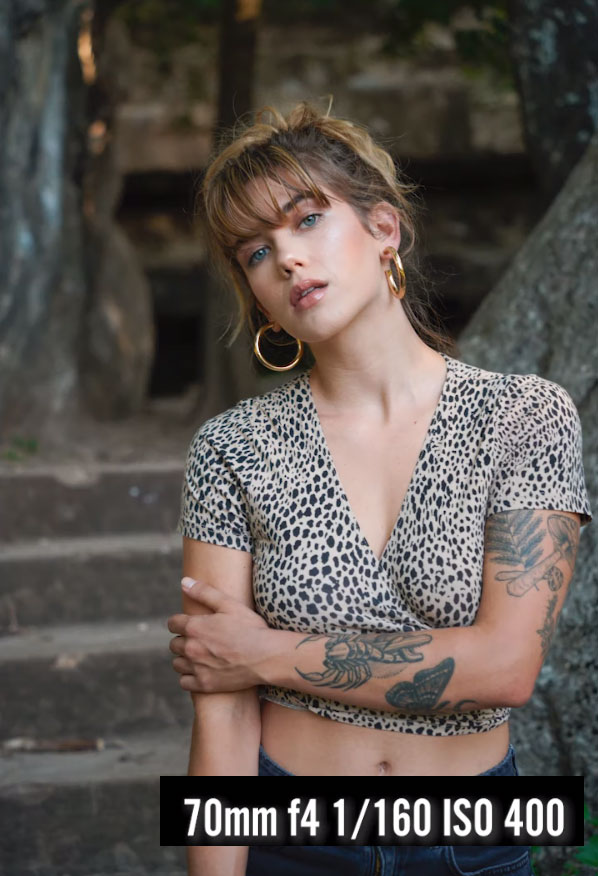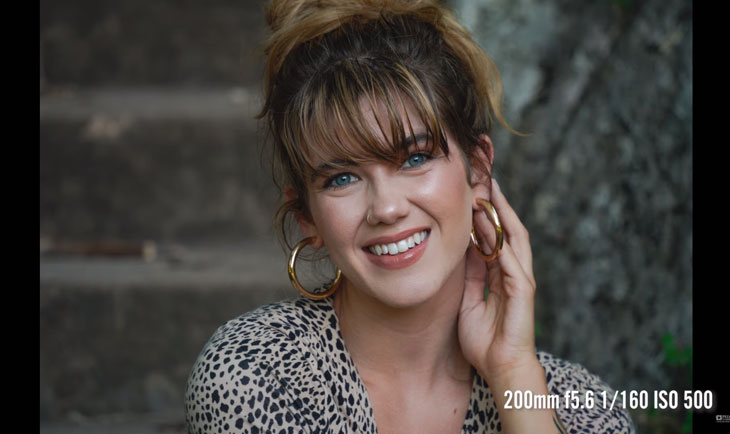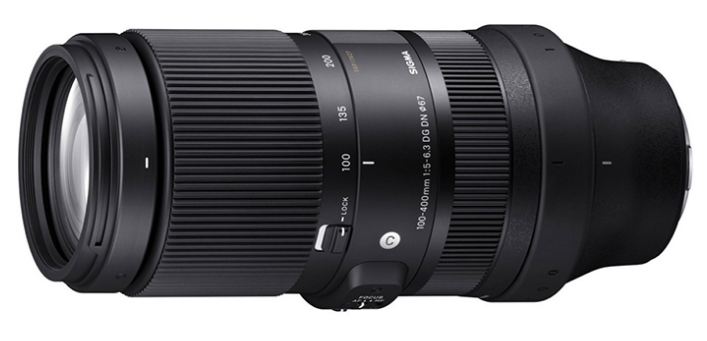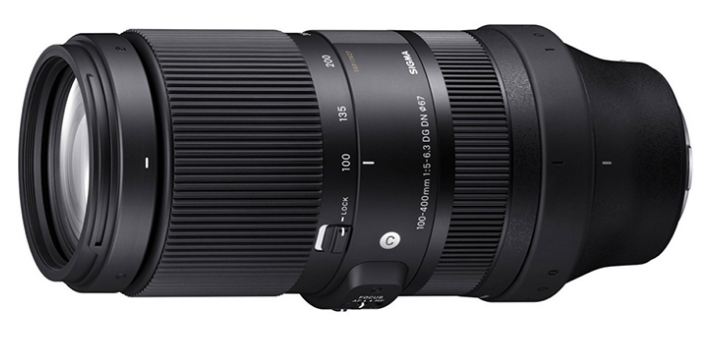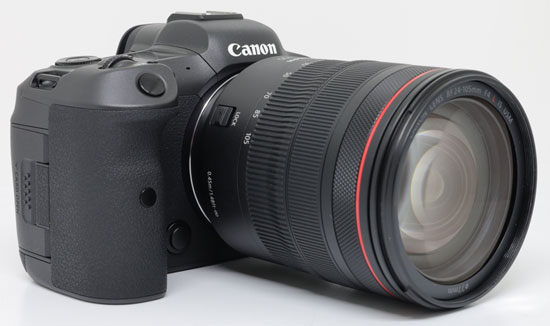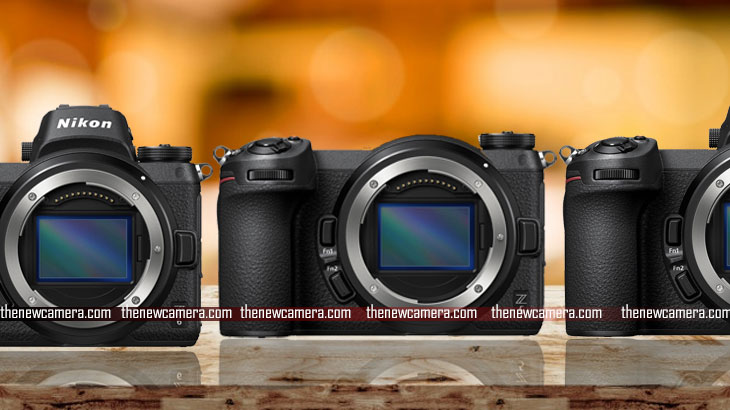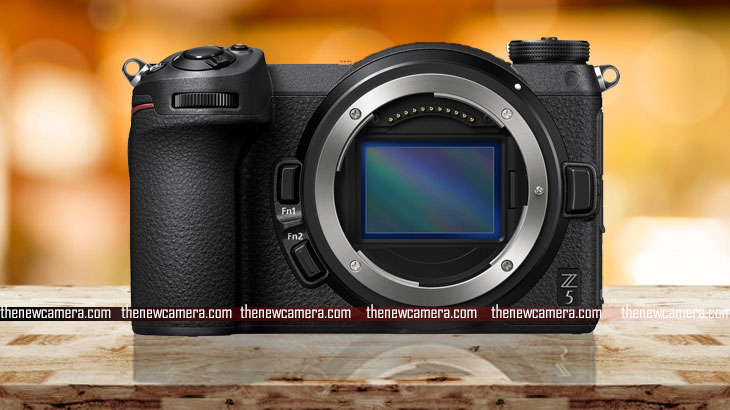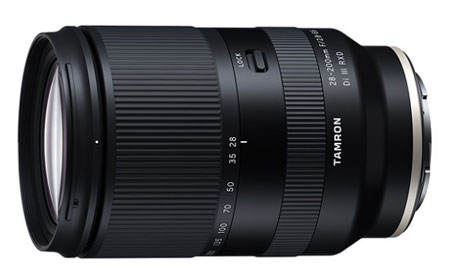
Tamron finally announced the new 28-200mm F2.8-5.6 versatile lens for Sony Fullframe E Mount camera. The Lens features STM motor inside for fast and silent AF. It is threaded for 67mm filters. The lens is moisture resistant, and the front element’s fluorine coating helps to repel oil and water.
The 28-200mm F2.8-5.6 Di III RXD is expected to go on sale in late June for $729. Although the shipping date isn’t confirmed.
Buy this lens from B&H Store
1. Press Release Tamon 28-200mm F2.8-5.6 Di III RXD
Tamron Announces Launch of the World’s First[1] All-In-One Zoom Lens Starting at F2.8 for Sony E-Mount Full-Frame Mirrorless Cameras
28-200mm F/2.8-5.6 Di III RXD (Model A071)
June 10, 2020, Commack, NY – Tamron announces the launch of the 28-200mm F/2.8-5.6 Di III RXD (Model A071), an all-in-one zoom lens for Sony E-mount full-frame mirrorless cameras. The lens is scheduled to be available on June 25 at $729. Due to the spread of COVID-19, the release date or the product supply schedule could be delayed.
In 1992, Tamron demonstrated breakthrough innovation with the release of the AF 28-200mm F/3.8-5.6 Aspherical (Model 71D), a compact and lightweight all-in-one zoom lens. The amazingly compact size, light weight and reasonable price made the lens immediately wildly popular with photographers around the world. In the years since, Tamron has continued to be a pioneer in the category, releasing epoch-making all-in-one zooms tailored to each era, including the recent 18-400mm F/3.5-6.3 Di II VC HLD (Model B028) that boasts the world’s highest magnification of 22.2x [2] and which currently enjoys robust sales. The new 28-200mm F2.8-5.6 is a distillation of all Tamron’s accumulated all-in-one zoom expertise and has been specifically developed as an all-in-one zoom for daily use on a full-frame mirrorless camera. Tamron chose Model A071 as the model name in a nod to “71” representing the world’s original compact all-in-one zoom.
The 28-200mm F2.8-5.6 is the first all-in-one-zoom in the world [1] to achieve a maximum aperture of F2.8 at the 28mm wide-angle end. To assure superb optical performance, it features a precise arrangement of special lens elements that accommodate the increasingly high resolutions of today’s digital cameras. Enabling high quality image rendering throughout the zoom range, the lens responds to users’ photographic expressions in powerful style. Moreover, with its 4.6” length, 20.3 oz. weight, and filter diameter of a mere 67mm, the 28-200mm F2.8-5.6 offers excellent portability. When combined with a compact, lightweight full-frame mirrorless camera, it allows photographers to capture virtually every scene they encounter in daily use, travel, sports and nature.
The 28-200mm F2.8-5.6 takes the convenience of an all-in-one zoom (which incorporates various angles of view from wide to telephoto in a single lens) and adds a fast-maximum aperture of F2.8 and superb image quality to enhance the potential for photographic applications. Breaking conventional limitations and broadening the horizons of photographic possibilities, this zoom lens writes a new chapter in the history of the all-in-one zoom lens.
PRODUCT HIGHLIGHTS
1. The world’s first F2.8 all-in-one zoom lens for full-frame mirrorless cameras
A remarkable first for an all-in-one zoom lens: the 28-200mm F2.8-5.6 achieves a fast F2.8 aperture at the 28mm wide-angle end. Additionally, maximum apertures at intermediate zoom ranges are F3.5 at 50mm, F4.5 at 100mm, and F5.6 at 150mm through 200mm. As an unprecedented all-in-one zoom that combines fast aperture with compact size, the 28-200mm F2.8-5.6 delivers greater versatility and usefulness than ever before available.
2. Lightweight and compact size for superior mobility
Tamron’s series of full-frame mirrorless camera lenses, starting with the 28-75mm F2.8 (Model A036), has been developed with the overall goal of balancing high performance with convenience. In addition to the series-standard 67mm filter diameter, and leveraging the camera integrated image stabilization, engineers concentrated on achieving compact size and light weight. Length is just 4.6”, maximum diameter is 74mm, and the weight is a mere 20.3 oz. With a size that offers excellent portability, the lens lightens your load, allowing you to travel comfortably and shoot unencumbered.
3. Uncompromising image quality that lets you focus on creativity
This new zoom lens contains 18 elements in 14 groups. A generous assortment of special lens elements that includes GM (Glass Molded Aspherical), hybrid aspherical, XLD (eXtra Low Dispersion) and LD (Low Dispersion) lens elements is precisely arranged to effectively control chromatic and other aberrations, enabling high resolving power. Meanwhile, the BBAR (Broad-Band Anti-Reflection) Coating provides powerful anti-reflection properties to effectively reduce ghosting and flare, resulting in clear and crisp images. In-camera correction features are utilized to mitigate distortion and shading to achieve uniformly high image quality from edge-to-edge at all zoom settings. Tamron has concentrated all its all-in-one zoom technologies into achieving optical performance that sets a new standard among existing all-in-one zoom lenses. From casual snaps to serious photos, this single lens lets you enjoy a wide range of shooting situations with complete freedom of composition.
4. Superior up-close shooting performance
The 28-200mm F2.8-5.6 delivers superior close-up shooting performance for an all-in-one zoom. At the 28mm wide-angle end the MOD (Minimum Object Distance) is 7.5”, achieving a maximum magnification ratio of 1:3.1. This performance, combined with the fast F2.8 aperture, allows users to move in close so that the subject is large while simultaneously showcasing a beautifully blurred background. Close-up shooting is remarkable at the telephoto end as well, with an MOD of 31.5” and maximum magnification ratio of 1:3.8. Users can capture impressive images with highly blurred backgrounds and create exceptional compositions.
5. The RXD stepping motor unit is exceptionally quiet
The AF drive incorporates a sensor that accurately detects the position of the lens while the RXD motor unit delivers optimized AF control. This achieves very fast and accurate autofocus operation, allowing users to maintain tack-sharp focus on continuously moving subjects or when filming video. The exceedingly quiet operation is an important advantage because it virtually eliminates extraneous sounds during video recording. In addition, the compact configuration of the RXD AF drive system contributes to the unprecedented size and weight reduction.
6. A full family of superb, compact lenses made especially for mirrorless cameras
The 28-200mm F2.8-5.6 zoom is based on Tamron’s stratagem of creating a series* of lenses for full-frame mirrorless cameras that leverage the characteristics of compact camera bodies. Consequently, photographers can more easily enjoy various combinations of interchangeable lenses. For example, when the Model A071 is combined with the 17-28mm F2.8 (Model A046), the combined weight of the two lenses is less than 35.1 oz. This lightweight, portable zoom set covers everything from wide-angle to telephoto with a zoom range of 17-200mm. Additionally, when combined with a lens from Tamron’s series of fixed focal lenses such as the 20mm F2.8 (Model F050) or 24mm F2.8 (Model F051), the weight is less than 28.2 oz., expanding the possibilities of shooting at the wide-angle end without adding excessive weight or bulk.
All lenses in the series share the common filter diameter of 67mm, thereby eliminating the hassle associated with using different size filters and lens caps. Costly filters (e.g., PL, ND, etc.) can be shared instead of buying separate units for each lens. In this way, Tamron has expanded its series of lenses to make it truly practical to carry multiple lenses at the same time.
7. Moisture-Resistant Construction, Fluorine Coating, and Zoom Lock switch
Seals are located at the lens mount area and other critical locations to deter infiltration of moisture and/or rain drops and afford Moisture-Resistant Construction. This feature provides an additional layer of protection when shooting outdoors under adverse weather conditions. Also, the front surface of the lens element is coated with a protective fluorine compound that has excellent water- and oil-repellant qualities. The lens surface is easier to wipe clean and is less vulnerable to the damaging effects of dirt, moisture or oily fingerprints, allowing for much easier maintenance. Additionally, the handy Zoom Lock switch prevents unwanted barrel extension during transportation.
8. Compatible with main camera-specific features* and functions
Tamron’s new 28-200mm F2.8-5.6 is compatible with many of the advanced features that are specific to certain mirrorless cameras. These include the following:
– Fast Hybrid AF
– Eye AF
– Direct Manual Focus (DMF)
– In-camera lens correction (shading, chromatic aberration, distortion)
– Camera-based lens unit firmware updates
